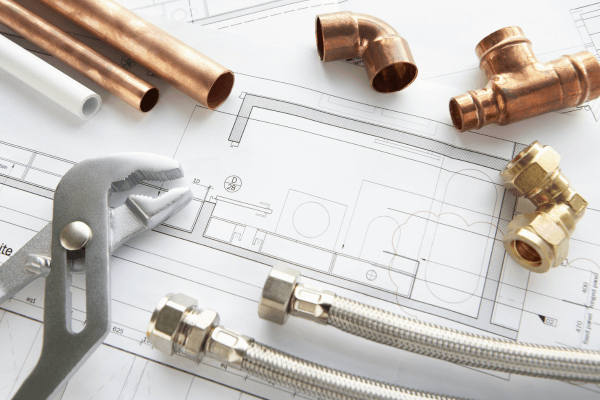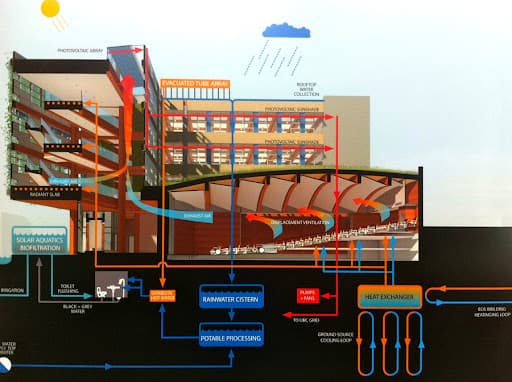The Fundamental Elements of Your House's Plumbing System
The Fundamental Elements of Your House's Plumbing System
Blog Article
The content listed below relating to Plumbing Installation 101: All You Need to Know is totally informative. Try it and make your own final thoughts.

Recognizing how your home's plumbing system functions is vital for every house owner. From supplying tidy water for drinking, cooking, and showering to safely removing wastewater, a properly maintained pipes system is critical for your family's health and wellness and convenience. In this extensive overview, we'll discover the intricate network that composes your home's pipes and offer ideas on maintenance, upgrades, and managing usual issues.
Introduction
Your home's pipes system is more than just a network of pipelines; it's a complex system that guarantees you have access to tidy water and effective wastewater removal. Knowing its components and exactly how they collaborate can assist you protect against expensive repair services and make certain everything runs smoothly.
Basic Components of a Plumbing System
Pipes and Tubes
At the heart of your pipes system are the pipelines and tubes that lug water throughout your home. These can be constructed from numerous products such as copper, PVC, or PEX, each with its advantages in terms of toughness and cost-effectiveness.
Components: Sinks, Toilets, Showers, and so on.
Components like sinks, bathrooms, showers, and tubs are where water is made use of in your house. Recognizing how these components attach to the pipes system aids in detecting problems and preparing upgrades.
Valves and Shut-off Points
Valves manage the flow of water in your plumbing system. Shut-off valves are crucial during emergencies or when you require to make repair work, enabling you to isolate parts of the system without interrupting water flow to the entire residence.
Water Supply System
Key Water Line
The main water line links your home to the local water system or a private well. It's where water enters your home and is distributed to numerous components.
Water Meter and Pressure Regulator
The water meter actions your water use, while a pressure regulatory authority makes certain that water moves at a risk-free pressure throughout your home's plumbing system, avoiding damage to pipelines and components.
Cold Water vs. Warm water Lines
Comprehending the difference between cold water lines, which provide water directly from the main, and warm water lines, which bring heated water from the hot water heater, assists in fixing and planning for upgrades.
Drain System
Drain Pipes and Traps
Drain pipelines bring wastewater away from sinks, showers, and commodes to the drain or septic tank. Traps protect against sewer gases from entering your home and also catch particles that might create blockages.
Air flow Pipes
Ventilation pipelines allow air right into the water drainage system, stopping suction that might slow water drainage and trigger traps to vacant. Proper air flow is crucial for preserving the honesty of your pipes system.
Importance of Correct Drain
Ensuring appropriate water drainage avoids back-ups and water damage. Consistently cleaning up drains and preserving traps can stop expensive repairs and prolong the life of your plumbing system.
Water Heater
Kinds Of Water Heaters
Hot water heater can be tankless or conventional tank-style. Tankless heaters warmth water as needed, while tanks keep heated water for prompt use.
Updating Your Pipes System
Reasons for Upgrading
Updating to water-efficient components or replacing old pipelines can enhance water high quality, decrease water expenses, and enhance the value of your home.
Modern Plumbing Technologies and Their Advantages
Check out technologies like smart leak detectors, water-saving bathrooms, and energy-efficient hot water heater that can save money and minimize ecological impact.
Expense Considerations and ROI
Determine the in advance costs versus long-lasting savings when considering pipes upgrades. Lots of upgrades spend for themselves with minimized energy costs and less repair work.
Exactly How Water Heaters Connect to the Plumbing System
Understanding exactly how water heaters link to both the cold water supply and warm water distribution lines aids in diagnosing issues like insufficient warm water or leaks.
Upkeep Tips for Water Heaters
Frequently flushing your hot water heater to remove sediment, examining the temperature setups, and checking for leaks can expand its lifespan and enhance energy efficiency.
Typical Pipes Issues
Leakages and Their Reasons
Leakages can happen as a result of maturing pipes, loose installations, or high water stress. Attending to leaks quickly avoids water damage and mold development.
Obstructions and Blockages
Obstructions in drains pipes and bathrooms are commonly triggered by flushing non-flushable items or a build-up of grease and hair. Using drainpipe displays and bearing in mind what decreases your drains pipes can protect against clogs.
Indications of Plumbing Troubles to Expect
Low tide stress, slow drains, foul odors, or unusually high water bills are signs of potential pipes issues that need to be resolved immediately.
Plumbing Upkeep Tips
Routine Inspections and Checks
Set up annual plumbing examinations to catch issues early. Seek indications of leakages, rust, or mineral buildup in faucets and showerheads.
Do It Yourself Maintenance Tasks
Straightforward tasks like cleansing faucet aerators, looking for bathroom leaks making use of dye tablet computers, or protecting revealed pipes in cold environments can protect against major pipes problems.
When to Call a Professional Plumber
Know when a pipes problem needs specialist expertise. Trying intricate repair services without proper understanding can lead to even more damage and greater repair work prices.
Tips for Minimizing Water Use
Basic habits like repairing leaks immediately, taking shorter showers, and running full loads of laundry and recipes can save water and lower your energy costs.
Eco-Friendly Plumbing Options
Think about lasting plumbing materials like bamboo for floor covering, which is durable and environmentally friendly, or recycled glass for kitchen counters.
Emergency Readiness
Actions to Take During a Pipes Emergency
Know where your shut-off shutoffs are located and exactly how to switch off the water supply in case of a burst pipeline or significant leak.
Value of Having Emergency Situation Contacts Helpful
Maintain call information for regional plumbing technicians or emergency services conveniently offered for fast reaction throughout a pipes dilemma.
Environmental Effect and Preservation
Water-Saving Components and Devices
Setting up low-flow faucets, showerheads, and toilets can substantially minimize water usage without giving up performance.
DIY Emergency Fixes (When Appropriate).
Momentary fixes like making use of air duct tape to patch a leaking pipe or placing a container under a trickling tap can lessen damage until an expert plumber shows up.
Conclusion.
Comprehending the makeup of your home's plumbing system equips you to keep it properly, conserving money and time on repair services. By complying with regular upkeep regimens and staying educated regarding contemporary plumbing modern technologies, you can ensure your pipes system operates efficiently for years to come.
The Anatomy of Your Home s Plumbing System
Understanding the anatomy of your home s plumbing system is essential for any homeowner. It not only helps in identifying potential issues but also facilitates effective communication with professionals when repairs or upgrades are needed. Your home s plumbing system is more than just pipes and faucets; it s a complex network that ensures the efficient and hygienic flow of water in and out of your house. In this blog, we ll dissect the crucial components of your home s plumbing system. For those in Antelope Valley, Brock Plumbing is your trusted partner for all your plumbing needs, ensuring your system functions smoothly and efficiently.
Water Supply System
Main Water Line: This is where your home s plumbing system begins. The main water line connects your home to the public water supply or a private well. Pipes and Shut-off Valves: Pipes distribute water throughout your home. Shut-off valves are crucial for controlling the flow of water and making repairs without shutting off the entire system. Drainage System
Drain Pipes: These pipes carry waste and water away from sinks, toilets, and showers. Vents: Vents allow sewer gases to escape and help maintain proper pressure in the drainage pipes, ensuring efficient flow of wastewater. Traps: Every fixture has a trap, a U-shaped pipe that holds water and prevents sewer gases from entering your home. The most common is the P-trap under sinks. Fixtures and Appliances
Fixtures and appliances are the most interacted with parts of your plumbing system. They include sinks, toilets, showers, dishwashers, and washing machines. Each fixture and appliance has its own supply and drainage connection, ensuring they receive clean water and can dispose of wastewater effectively.
Water Heating System
Your water heater is a crucial component, providing hot water to various fixtures and appliances in your home. It can be tank-based or tankless, with each type having its own set of advantages and maintenance requirements. Regular maintenance is essential to ensure efficient operation and extend the lifespan of the unit.
Sump Pump
In areas prone to flooding or with high water tables, a sump pump is an essential part of the plumbing system. It s installed in the lowest part of your basement or crawlspace and pumps out water that accumulates, preventing flooding and protecting your home from water damage.
Septic System
Homes that are not connected to a municipal sewer system have a septic system and an underground wastewater treatment structure. Understanding how to maintain your septic system is crucial to prevent backups, odors, and early system failure.
Conclusion
Your home s plumbing system is a complex and essential network, ensuring the efficient and hygienic flow of water in and out of your property. Understanding its key components helps in maintaining it properly and identifying issues before they escalate into major problems. For residents in Antelope Valley, Brock Plumbing is dedicated to providing top-notch services, ensuring that every part of your plumbing system is in perfect working order. Trust our team of professionals to handle all your plumbing needs, ensuring your home remains comfortable, safe, and well-maintained.
https://brockplumbinganddrains.com/blog/the-anatomy-of-your-homes-plumbing-system/

As a passionate person who reads about Plumbing Installation 101: All You Need to Know, I think sharing that piece of content was essential. Enjoyed reading our content? Please quickly share it. Help somebody else find it. I am grateful for being here. Please come by our blog back soon.
Visit Url Report this page